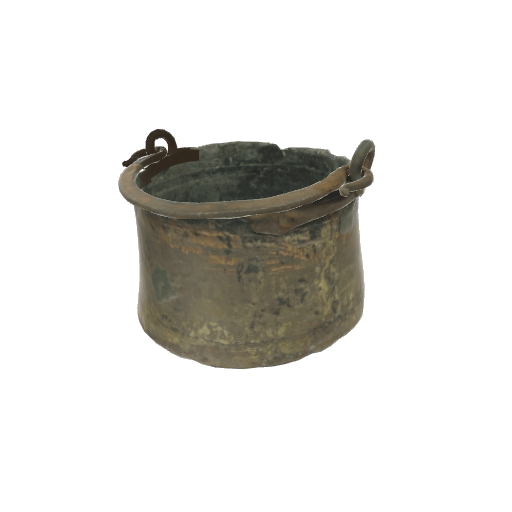Copper cauldron
In the 16th and 17th centuries, the copper cauldron, a cooking container used by Europeans, is the most prized trade good among Indigenous peoples. The Algonquian peoples particularly value its lightness, making it easy to transport during seasonal travel.
Beyond its utilitarian functions related to cooking, the cauldron plays other roles in the belief systems and worldviews of Indigenous peoples, because it is made of copper.
Notably, European copper is used for ceremonial and ritual purposes. The red color of the metal is particularly prized for its aesthetic qualities. Pots and pans are often cut up before being used for cooking to make jewelry, such as bracelets, rings, anklets, pendants, and earrings.
While European metal objects are starting to circulate, Indigenous peoples continue to craft similar items in traditional materials (bone, wood, stone, clay). The dependence on metal objects grows over the long term.
References
Date: 17th century
Origin: Unknown
Owner: Vieux Moulin—Hydromellerie et miellerie. “Musée de la Neufve-France” private collection. Sainte-Flavie.
Sources:
Turgeon, L. (2019). « Faire Chaudière » en Amérique du Nord [“Making buckets” in North America]. In Une histoire de la Nouvelle-France, Français et Amérindiens au XVIe siècle (pp.159-168). Belin.
Canadian Museum of History. (n.d.). Economic activities: Fur trade. Virtual museum of New France. Retrieved October 6, 2022, from https://www.historymuseum.ca/virtual-museum-of-new-france/economic-activities/fur-trade/
Pointe-à-Callière, cité d’archéologie et d’histoire de Montréal. (n.d.). Cône clinquant [Tinkling cone]. ARCHÉOLAB.QUÉBEC. Retrieved October 6, 2022, from https://www.archeolab.quebec/recherche/objet/216183
